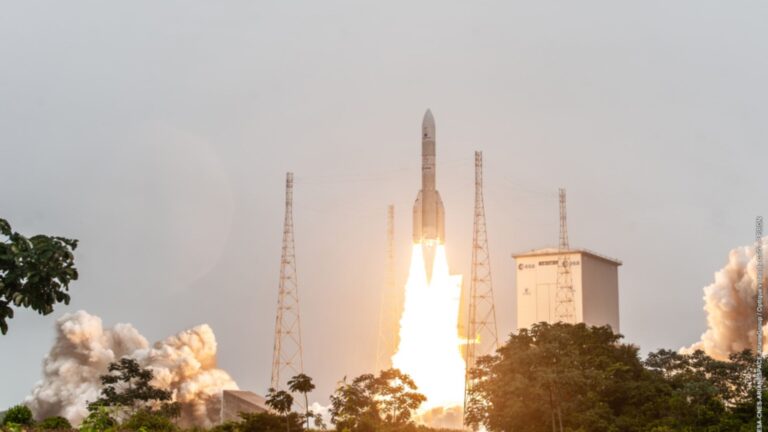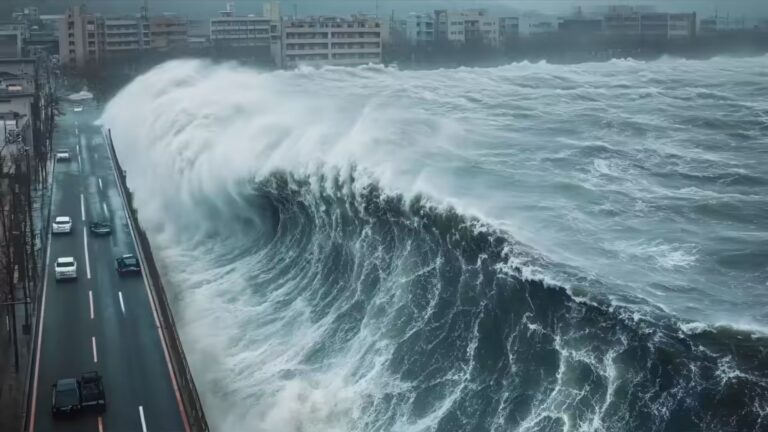
Breakthrough Discovery: Ancient Microbes Unveiled in Antarctica's Blood Falls, Offering Clues to Life Beyond Earth
Antarctica, the southernmost continent on Earth, is a land of extreme conditions and captivating mysteries. Among its many enigmas lies an extraordinary phenomenon known as “Blood Falls.” Located in the McMurdo Dry Valleys of East Antarctica, this mesmerizing natural wonder has fascinated scientists and explorers for decades.
After more than a century of investigation, scientists have finally unraveled the mystery behind this eerie phenomenon. Recent discoveries shed light on the presence of ancient microbes and nanospheres that contribute to the striking red coloring. This breakthrough not only deepens our understanding of Blood Falls but also highlights the challenges of detecting life in extreme environments, such as Mars.
Table of Contents
A Century-Long Puzzle:
During a British expedition in 1911, scientists stumbled upon a glacier seemingly bleeding onto an ice-covered lake. This peculiar sight, known as Blood Falls, left researchers puzzled for over a century. While previous studies focused on the chemistry and microbes in the discharge, a comprehensive analysis of its mineralogical composition was still missing.
The Enigmatic Flow:
Blood Falls owes its name to the vivid red hue of its outflow, reminiscent of blood. It emerges from Taylor Glacier, a massive glacier that stretches across the Victoria Land region. The crimson cascade appears to bleed from the white icy surface, creating a stark contrast against the frozen landscape.
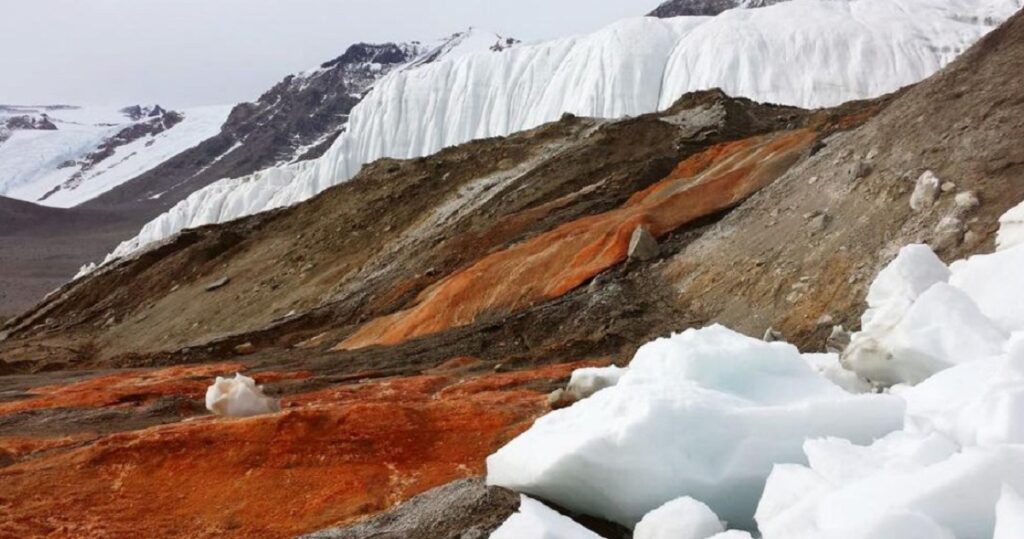
Unveiling the Microscopic Culprits:
In 2006 and 2018, a team of US scientists conducted extensive research on Blood Falls, collecting samples and examining them with advanced electron microscopes. Their findings revealed the presence of iron-rich nanospheres, derived from ancient microbes living within the Taylor Glacier. These nanospheres, a hundredth of the size of human red blood cells, contain iron, silicon, calcium, aluminium, and sodium. When exposed to oxygen, sunlight, and warmth as the meltwater from the glacier meets the outside world, these nanospheres contribute to the iconic red hue of Blood Falls.
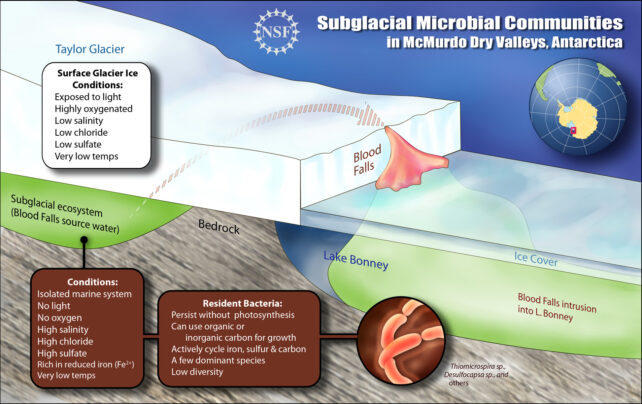
Implications for Astrobiology:
The microbial community beneath Taylor Glacier, isolated for millennia or even millions of years, offers a unique environment for astrobiologists. By studying life forms in such extreme conditions, researchers gain valuable insights into the potential for hidden life on other planets. The recent discoveries at Blood Falls suggest that current technologies used in space exploration, such as the Mars Rover, may not be equipped to detect all types of life. The nanospheres in Blood Falls would go unnoticed by current rover instruments, emphasizing the limitations of our methods for identifying microbial evidence on colder planets like Mars.
Challenges of Detection:
The inability to detect the nanospheres in situ raises concerns about the limitations of current spectroscopic equipment used in space missions. The bulky and power-hungry nature of electron microscopes prevents their integration into Mars rovers or other space exploration vehicles. Thus, the true nature of environmental materials on planet surfaces may remain elusive without the ability to study samples directly on Earth. It highlights the necessity of sample return missions to thoroughly investigate potential nanoscopic evidence of life beyond our planet.
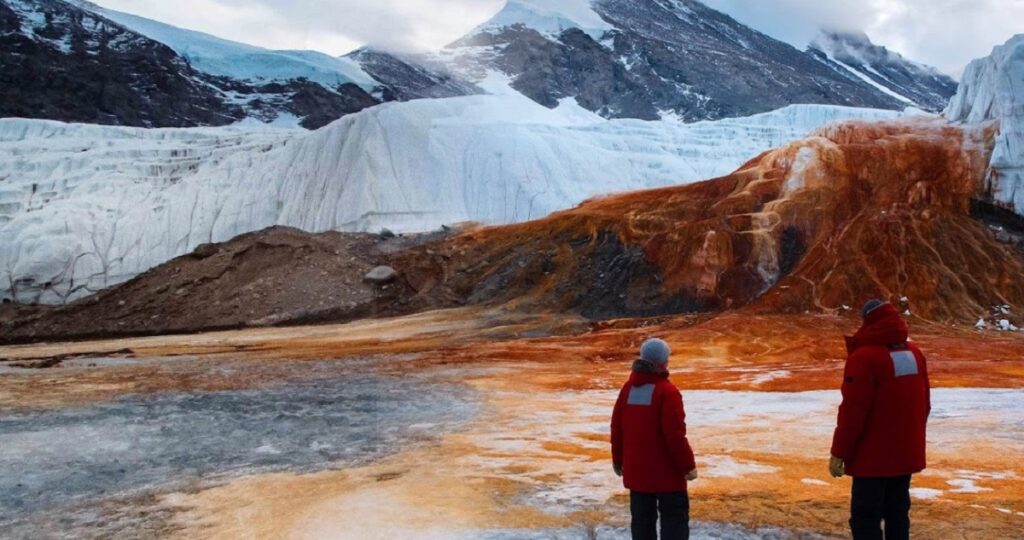
The Quest for Answers Continues:
While the recent breakthroughs shed light on Blood Falls and its hidden microbial life, there are still many unanswered questions. Researchers are striving to develop new technologies and methods to detect and study microscopic life forms in extreme environments. The ongoing exploration of Antarctica’s Blood Falls serves as a reminder of the vast frontiers awaiting scientific discovery and the importance of pushing the boundaries of our knowledge.
Conclusion:
Antarctica’s Blood Falls has transitioned from an enigmatic phenomenon to a scientific marvel. The discovery of iron-rich nanospheres and ancient microbes beneath Taylor Glacier’s icy surface unveils a vibrant microscopic ecosystem thriving in one of the harshest environments on Earth. Furthermore, these findings emphasize the challenges of detecting life in extreme conditions and the need for advanced technologies to explore the potential for life beyond our planet. Blood Falls serves as a reminder that the secrets of the universe are waiting to be unlocked, one scientific breakthrough at a time.
The Study was Published in Astronomy & Space Science.
Find Location: Blood Falls Antarctica

